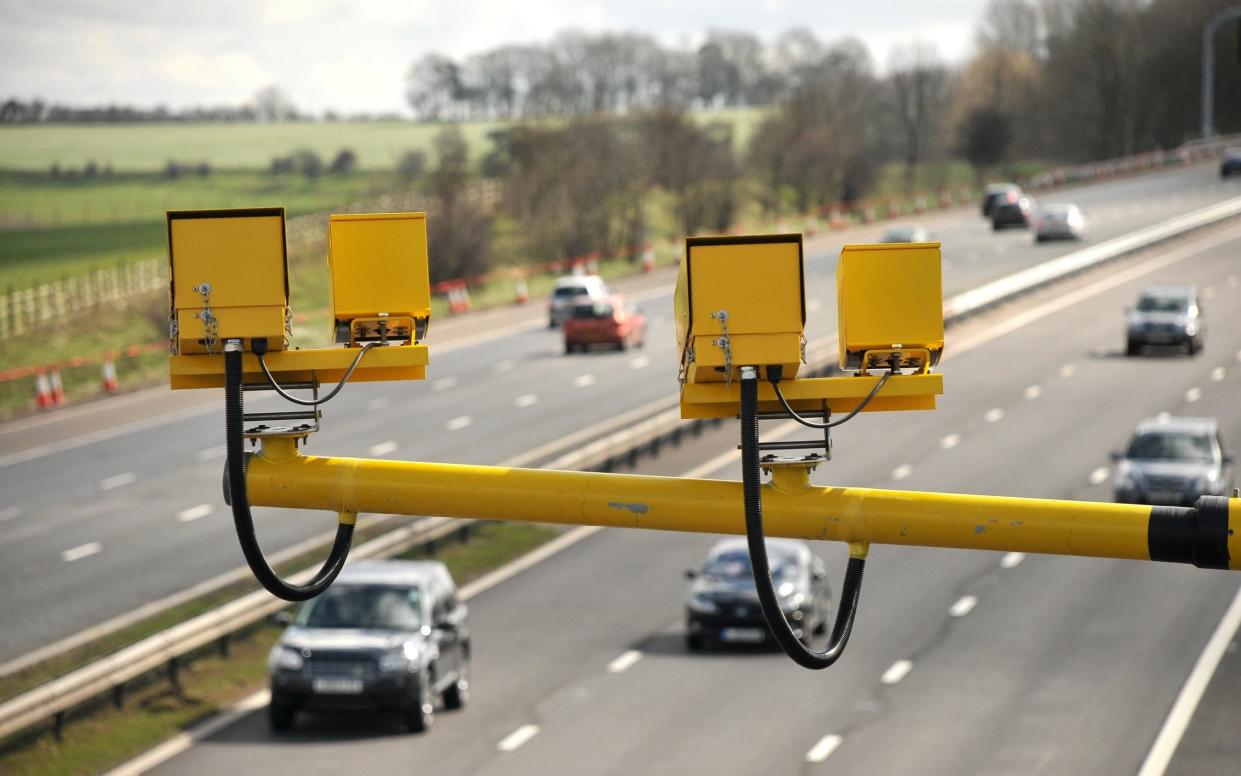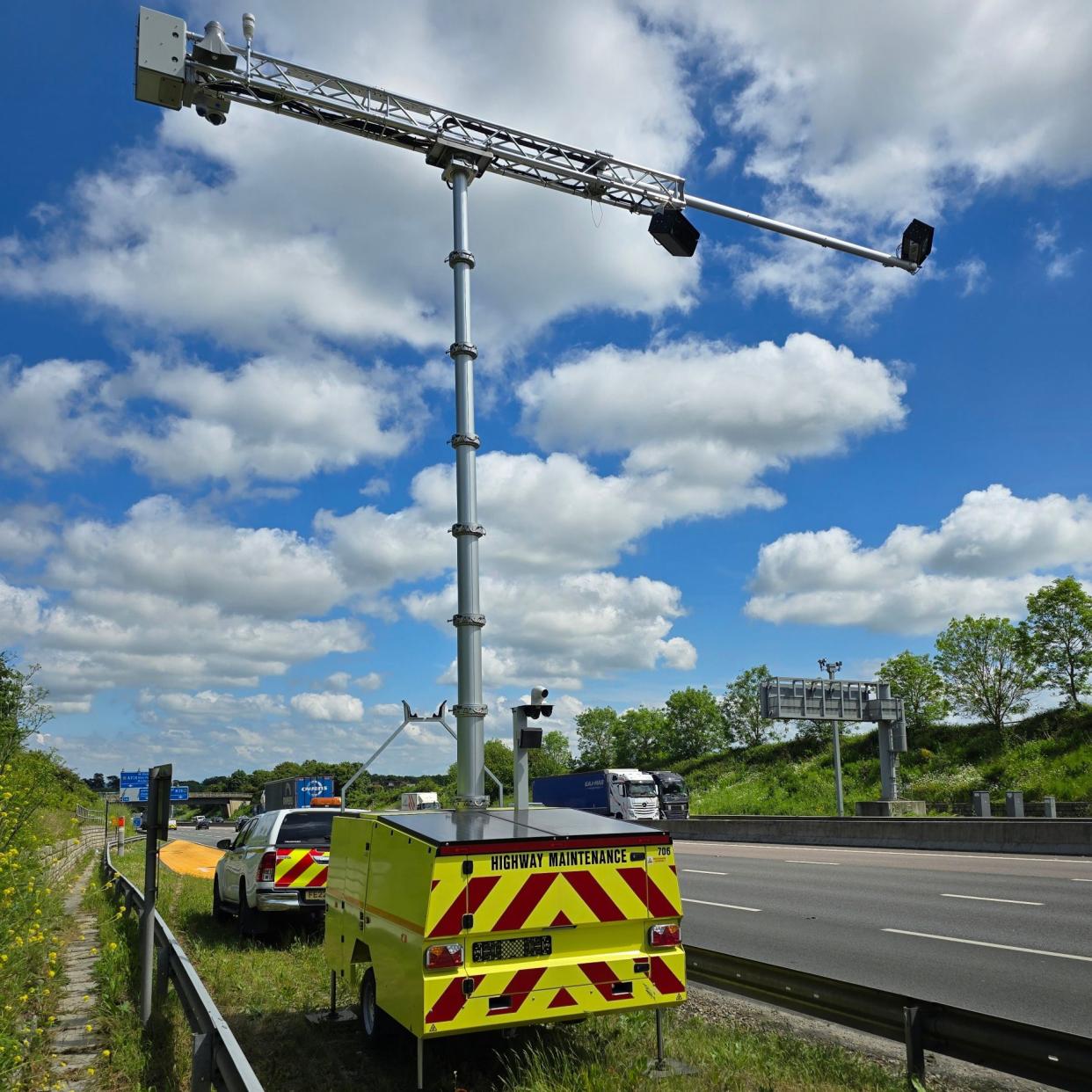AI speed cameras which can ‘spy inside’ cars to be rolled out

AI speed cameras which can “spy inside” cars are set to be rolled out nationwide to catch motorists using mobile phones at the wheel or failing to wear seatbelts.
New AI technology is enabling police not only to catch speeding drivers but also clampdown on motorists “distracted” by their phones even if they have them on their lap while at the wheel.
The move has raised privacy concerns while the AA has warned that AI cameras must not become a substitute for traffic officers stopping suspect motorists who might also be drink driving – an offence which would not be caught by simply snapping images.
At least a quarter of the 44 police forces in England, Wales and Scotland are already deploying cameras which can catch motorists using mobile phones at the wheel.
If caught, drivers holding a handheld device behind the wheel can face six penalty points and a £200 fine, increasing to £1,000 and a driving ban if taken to court.
AI software analyses images
Eleven police forces have deployed roadside cameras, developed by Acusensus, which capture images of vehicles as they pass. One is from a shallow angle to see a phone at the driver’s ear, and a second taken from a steep angle detects the device if it is on their lap.
AI software analyses all the images and flags those where the driver is suspected of holding a mobile phone or not wearing a seatbelt. Encrypted “violation packages” are sent to police to decide whether to prosecute.
To counter privacy concerns, a police officer reviews anonymised pictures without any identifying features such as number plate, passengers or make of the vehicle. If it goes to prosecution, the images are then matched to the registration details.
The police forces taking part in the trial with National Highways are Durham, Greater Manchester Police, Humberside, Staffordshire, West Mercia, Northamptonshire, Wiltshire, Norfolk, Thames Valley Police, Sussex and Warwickshire.

New hi-tech speed cameras which can catch motorists using mobile phones as well are also being deployed by police. The Vector-SR cameras, developed by Jenoptik, can track two-way traffic instead of just the left hand lane and use radar which means there is no need for road markings or sensors in the road.
Because they use infrared low light technology, they also do not flash at speeding drivers. This means drivers will not necessarily know if they have been fined. Pictures can also be checked and used to catch mobile phone users. It is understood the technology is being rolled out by Police Scotland.
A third brand of camera, developed by Redspeed International, uses 4D radar technology and high-resolution imaging to detect speeding vehicles, drivers using mobile phones or not wearing seatbelts and can link with DVLA to verify if a vehicle is insured and taxed.
‘Intrusive and creepy surveillance’
Research by the Department for Transport suggests that 150,000 to 400,000 of the 50 million British drivers are still using handheld devices illegally while behind the wheel.
Jake Hurfurt, head of research and investigations at Big Brother Watch, a privacy campaign group, said: “Unproven AI-powered video analytics should not be used to monitor and potentially criminalise drivers.
“This kind of intrusive and creepy surveillance which treats every passer-by as a potential suspect is excessive and normalising it poses a threat to everyone’s privacy. People should be free to go about their lives without being analysed by faceless AI systems.”
Jack Cousens, head of roads policy at the AA, said: “Cameras that can do everything and anything are a good thing from a road safety perspective because it means there is less chance of getting away with dangerous driving.
“However a camera can only record an incident in that moment in time but cannot intervene if that person might be speeding because they have been drink driving.”
Matt Staton, National Highways’ head of national road-user safety, said: “We know that distracted driving and not wearing seatbelts were key factors in a high number of incidents that resulted in people being killed or seriously injured.
“Working with our police partners we want to reduce such dangerous driving and reduce the risks posed to both the drivers and other people. We believe that using technology like this will make people seriously consider their driving behaviour.”


